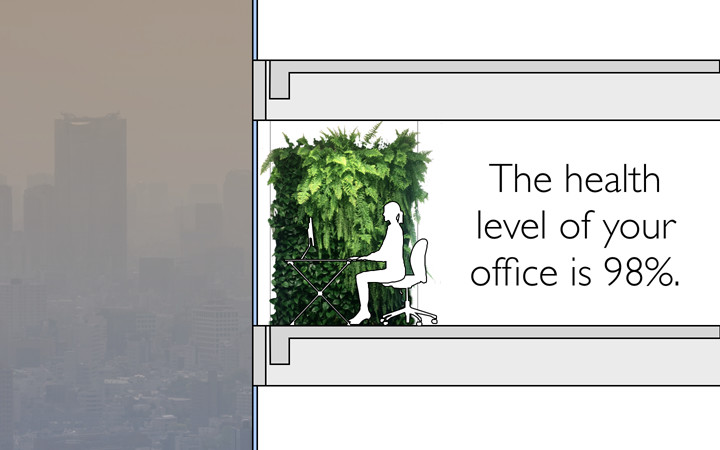Humans are hard-wired for feedback from our environment. It is what has defined our evolution ever since life appeared on earth. We literally live and die on environmental response.
Yet today we spend over 90% of our time in environments that are completely unresponsive: buildings. Within these dead environments we make up for the lack of feedback by focusing on other sources. Cell-phones for example, are addictive largely because they are so feedback rich.
10 years ago we began adding IAQ (indoor air quality) sensors to buildings. It was a technical exercise: we’d collect data for several days, download, graph and analyse it. By then the data was already historical or ‘dead’.
A few years later while doing research for what would become RESET, we enabled the sensors to stream directly to our phones in real-time. Within days, we realized the impact of that simple shift: we were no longer just documenting data - we were tracking the pulse of the building. We had done this before with energy, but never with environmental data. It was addictive because unlike energy, environmental data affected us personally: our health, comfort and wellbeing. We found ourselves listening and responding in real-time. The data had gone from being dead to being living.

Living Data: Real-time data that empowers life to thrive.
Most outdoor environmental ‘data’ doesn’t make it indoors. You can’t feel the wind. You don’t hear the sounds and if you’re lucky enough to be next to a window you might sense the changing sunlight. Meanwhile indoors, light, temperature and humidity are set to be constant. The ‘environmental’ data that does change is mostly invisible: TVOC, particulate matter (PM) and CO2.
Over the past millenniums we’ve evolved to sense critical outdoor ‘data’. We hear, see, feel, taste and smell threats and opportunities. Our survival has depended on it. Unfortunately, modern buildings haven’t been around long enough for us to evolve and respond to the threats we’ve created inside them. The CO2, VOCs and particulates that get trapped indoors are undetectable to our senses and our long term exposure to them are causing chronic fatigue, irritations, leukaemia, cancer and many other illnesses.
When buildings start talking to us - when we track their pulse - we discover that they are making us sick. At first, this allows us to respond, experiment and learn how to eliminate these health hazards. Then, it enables us to push further and create spaces for us to thrive in and maximize our potential.
We are hard-wired for environmental feedback. By empowering buildings to give us this feedback, we see the potential for the industry to transform itself from the inside out - literally. In searching for performance metrics we may have stumbled across our simplest and most powerful tool so far: enabling our buildings to communicate.